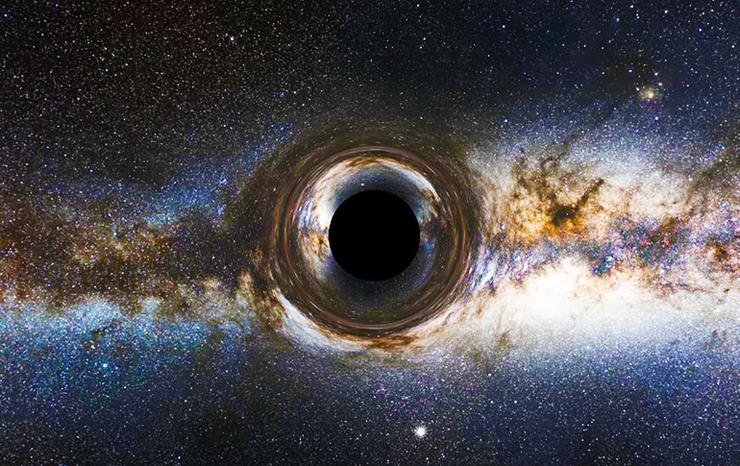
"Thou shalt likewise know that according to Law, the nature of this universe is in all things alike. So that thou shalt not hope what thou ought'st not to hope; and nothing in this world shall be hid from thee. Thou wilt likewise know, that men draw upon themselves their own misfortunes voluntarily, and of their own free choice. Unhappy that they are! They neither see nor understand that their good is near them."
- Pythagoras, Golden Verses #52-55
- Pythagoras, Golden Verses #52-55
The fourth epoch of our current age was previously compared to a "reflecting mirror". That is a very useful image, but it is important to keep in mind all such images are partial ones used to point in the direction of one central function of the epoch. Many more partial images should be employed to view that function from different angles and none of them, including the totality of all potential partial images, should be confused for the Reality itself. For, by intellect, we see only through a glass darkly, but, by higher Imagination, we begin to see face to face; to move from knowing in part to knowing more fully. Another useful partial image are those of a black hole and 'inverted' black hole. The total mythic content of the 3 epochs prior to the 4th and the 3 epochs after the 4th can be found orbiting its Center of gravity, as our entire Solar system revolves around a black hole at the Galaxy's Center.
The inverted black hole is also a sort of Centrifuge - the mythic content of all other six epochs is absorbed, transfigured, and - by violent and moderating power - radiated to each corresponding epoch (1-7, 2-6, 3-5). That applies to all ideal content of myth, art, philosophy, religion, and science in our current age. With these mythic and physical images, we are symbolizing the very structure of Reality itself. All of our current experience and meaning arrives to us from this Center, just as the Sun reflects Light and Warmth towards the Earth, making all of its living rhythms possible. It is how the Eternal manifests within the temporal; the Universal within the particular; the Infinite within the finite; the Spiritual within the physical. It is how the Word became flesh and made His dwelling among us.
I will be very explicit with the mythic connections here, because there is a vast number of apparently fragmented contents within the orbit of the 4th epoch - their name is Legion, for they are many. As always, though, we must try to perceive the content by way of images rather than the 'things' of our verbal intellect, so that the fragments may be usefully reintegrated within the mythic whole. The more we try, the more the Sprit will strengthen us with its power from within our inner being, so that we may do immeasurably more than all we currently imagine. We should let the meaningful qualities of those images soak into our soul, so we may begin to sense the increasingly more lucid thought-consciousness from which they arose in the 4th epoch. That, in turn, makes the content considerably easier for modern man to find his bearings in.
Visualization is only the first step towards Imagination - once the inner meaning of an image is sensed, the visual scaffolding should be dismantled, because the abstract spatial dimensions of width, depth, height - indeed all structures of outer surfaces - simply do not exist in the manner that we perceive them. These representational structures exist to serve a purpose in our experience - to help orient our thought towards the full depth of inner qualities of meaning. Three dimensions of space, for example, point us to three dimensions of spiritual activity - Willing (width), Feeling (depth), and Thinking (height). Once their purpose is served, the abstract visuals are no longer needed - new wine should not be poured into old wineskins or else both will be ruined.
Our mythic exploration of the Gita took us from the tail end of the 3rd Egypto-Chaldean epoch into the 4th Greco-Roman epoch. Since the 4th epoch is the reflecting mirror of our current age, the transition from 3rd to 4th epoch is mirrored in the transition from the 5th to the 4th. We are traveling down from the marked lines on both sides of the "V" to converge at its Center. With the images of a "black hole" and "reflecting mirror", we sense how difficult it is to directly approach and examine this Center. There is an 'event horizon' at its core which mere intellectual concepts cannot cross without being decohered into useless fragments. It is easier for a camel to pass through the eye of a needle than for a man with only intellectual riches to enter this Kingdom of God.
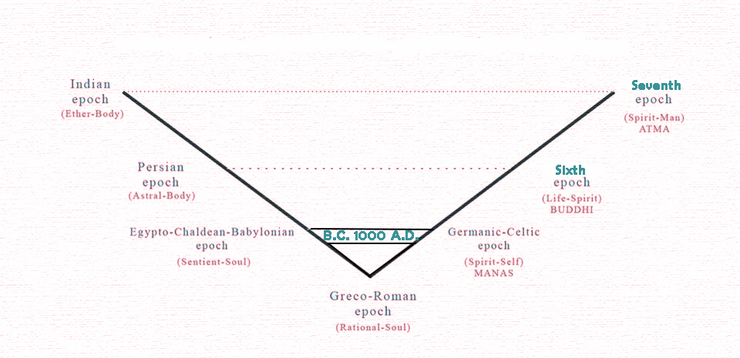
Nevertheless, we can begin the approach with intellect and basic imaginative thinking so as to erect a solid base from which we can begin our inward quest towards the infinitely more rich meaning of mythic parables; towards an unveiling of their mysteries in our eyes which see, our ears which hear, and our thinking hearts which understand. The transition from the 3rd to 4th epoch places us in the heart of ancient Greek civilization, while the time period at the border of the 4th to 5th epoch places us in the heart of the late medieval era. We will need to rely on the mythopoetic and philosophical thought-systems erected by various personalities during these time periods to begin our descent towards the Center - a descent which then makes possible a future ascent within our own epoch.
The 3rd to 4th transition marked a major change in the relationship of perceptions to thoughts. That blossoming inversion of perception to thinking, in turn, allowed the soul to begin asking questions about its own relation to the sense-world; an inner spark of curiosity we also saw emerge within Arjuna in the last chapters of the Gita. In this transition, thoughts are still perceived as arriving to the soul from the 'outer' world - illustrated by Homer's epic poems beginning with the words, "Sing, O Muse..." - but not as vividly by way of images as they were in prior epochs. These souls were preparing the Western soil to usefully receive the following question - "who knows a person's thoughts except their own spirit within them?" - and to begin a journey which raises up the answer from within.
For these souls, there was still an inseparable connection between the sense-impressions of the outer world and the ideal content perceived by thoughts more and more from within. The questions prompted by this "Axial Age" transition help us to make sense of nearly all philosophy which arose from that time until the mechanistic modern age - before we come to that hollow and deceptive philosophy in the 15th century which depends on elemental spiritual forces - and they also shed light on the Greek and Hebrew mythology which arose around the same time. Mythology cannot be usefully divorced from philosophy during this central epoch, as they integrally arose within and through one another in the dawning of its Self-consciousness. Let us try to internalize three of these questions so that we can hold them in mind as we move forward.
- How and why do I perceive meaning (thoughts) in the world around me?
- What is the connection between my own awareness, these dimly perceptible thoughts, and the rest of the sensible appearances in the world?
- How do the thoughts from the sensible world relate to my vague memories of a supersensible world?
Our approach here is a phenomenology of mythic imagery, but we cannot expect all of this content to fall right into place in any mechanical way. In the 4th epoch, an impulse descended into the sense-world as Light - to see the Light's mobile and living thought in the sense-world is to also begin casting off the darkness which shrouds it. In this first installment, we will briefly survey key personalities in the Western world, while also relating their world-conceptions to the ancient Greek and Hebrew mythic imagination more broadly. This dawn of ancient Western civilization marks the beginning of philosophy proper, as the latter can only be engaged when some inner thought activity begins to develop - when the soul senses itself as clearly distinct from its surroundings. This birth of thought was not limited to ancient Greece and Israel, as it also manifested in ancient India, China, Persia around the same time, but we will discuss the latter two in subsequent installments.
We first seek entry into the ancient Greek and Hebrew mythology by way of medieval philosophers-theologians of the 4th epoch, since we are much closer in perspective to their relatively abstract thought. Ancient Greek thought, as expected under the reflecting principle, was reborn in the European consciousness of the late medieval era. During the ancient Indian, Persian, and most of the Egpyto-Chaldean epochs, thoughts arrived to the soul by way of vivid images perceived as Divine revelation, just as we perceive physical images of colors, shapes, motions, etc. in the world around us. It is only during the Greco-Roman epoch when thought-forms began entering the spiritual 'threshold' between the soul's 'outer' and 'inner' worlds, and eventually crossed over into the latter - that is when souls began desiring to be joined together in the same mind and in the same judgment.
Since Aristotle in 400 B.C., very little new understanding of philosophy or mythology [or lack of it] developed until the modern age. There are a few notable exceptions who adopted and transformed the thoughts embodied by those ancient thinkers in novel ways. This novel approach resulted from the submersion of thought into the new religious undercurrent of Christianity. That spiritual undercurrent weaved their world-conceptions deeply into the framework of integral spiritual mythology; it began to replace the infant's milk of religious dogma with the solid food of rigorous spiritual thought. We will broadly outline a few of these thought-systems of the 4th epoch and make some relevant connections to ancient mythology. We are now travelling down the right slope of the "V" towards the Center point where the Spirit's involution ended and its evolution began.
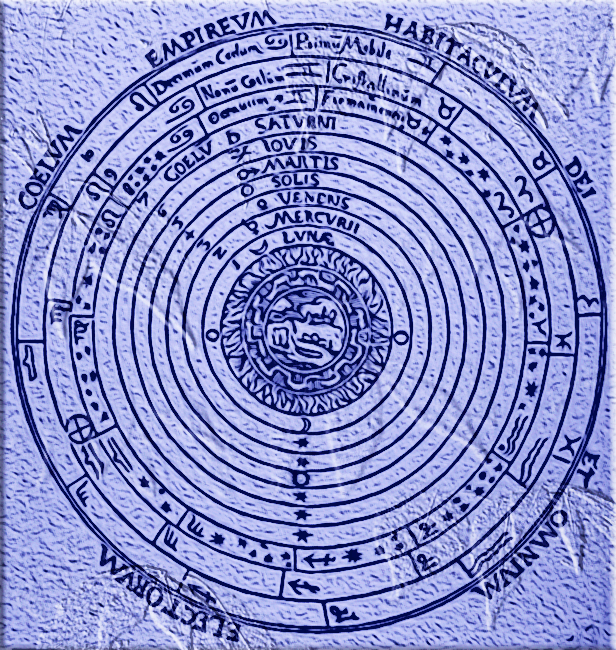
- Thomas Aquinas (~1250 A.D.) - This late medieval Scholastic philosopher and theologian did the most to reintegrate the rigorous logic of Aristotle into the spiritual framework of Christianity. He is the prime representative of the mirror image transition taking place at the tail end of the 4th epoch. In the 3rd to 4th epochal transition, the human ego was descending more fully into the life of the sense-world, and, in the 4th to 5th transition, the human ego was beginning to re-ascend, by way of inner abstract thought, to the spiritual world. With Saint Aquinas, then, we see the image of a precisely logical spirituality - even approaching a scientific spirituality - which did not exist before him or after him until the time of Goethe five centuries later.
Aquinas was engaged in a highly disciplined and reflective thinking which did not leave any conceivable stone unturned. He sought to exhaust all that human Reason could penetrate into before succumbing to established ecclesiastical doctrines of Divine revelation. In the final analysis, Aquinas concluded that Reason cannot penetrate into the deepest spheres of the Spirit by its own power. That is, Reason cannot penetrate into "Empyreum" - the tenth and final celestial sphere of spiritual intelligences ("Angels") which encompass the Earth at its center. This tenth spiritual sphere of the "Prime Mover" was the 'furthest' away from Earth, as depicted in the diagram above. These celestial spheres of Angels for Aquinas are the same as those for Aristotle.
Another tension to keep in mind is that between individual 'things' perceived in the sense-world and the underlying essence of those 'things'. Thinkers such as Albertus Magnus and Aquinas observed that the latter is actually what we perceive and remember from our experience, both immediately and by subsequent reasoning (philosophical realism). Aquinas had no use for the dead abstract concepts of nominalism which had also arose, rather his motto was: let the dead bury their dead. For Aquinas, human Reason allowed the individual soul to perceive, from within itself, the archetypal spiritual reality - one filled with actual living beings - which had only been previously revealed by way of visions. These are the Angels in Aquinas' "first sphere", who emanate from higher spiritual realms and have the 'lowest margin' of their activity shining down on Earth.
In the most real sense, this period was that of humanity's puberty and adolescence; the period in which we experience a staggering tension between our life as a member of a social collective - a religion, a nation, a family, and a set of peers - and our life as an individual thinking personality. It is that tension which is so important for us to keep in mind, for it is the same tension which also remerges in the 20th century and finds its home in various personalities who desired to continue where Aquinas left off - bridging the gap between the human individual personality and the human who belongs to a spiritual collective. We are still in this adolescent stage and in danger of delaying the transition into spiritual adulthood far longer than is healthy - we are neither hot nor cold, but lukewarm, and may be spewed out of the Spirit's mouth.
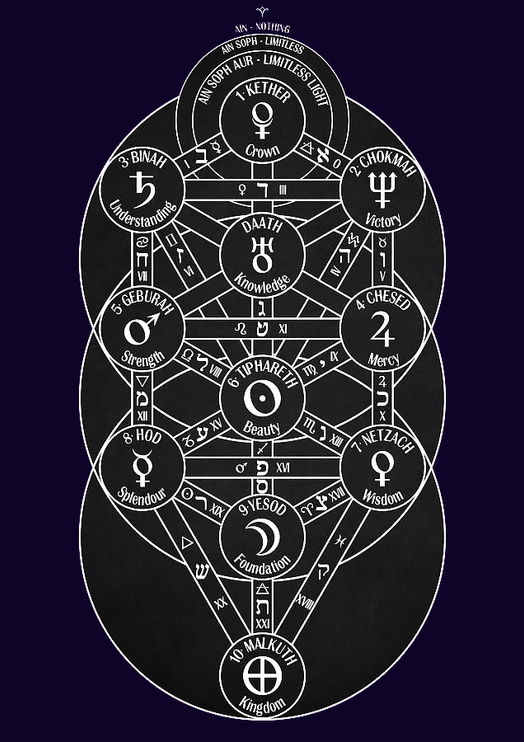
- Maimonides (~1150 A.D.) - The "Kabbalistic Tree of Life" depicted above is a Hebrew mythic representation of the ten spheres of Aristotle and Aquinas. The most well-known and prolific Jewish philosopher of the middle ages was Maimonides, and I am including him here as a stark contrast to Aquinas and those philosophizing from within the Christ-impulse. The Reason of Aquinas was striving upwards from the sense-world manifestations to their spiritual archetypes, attempting to understand all that is sensible in terms of the revealed spiritual, while the intellect of Maimonides was working in the opposite direction - it desired to understand all that was spiritually revealed in terms of the sense-world. That is not to diminish his brilliance or say he lacked insight, but it is simply relaying the fact of the matter as we discern from his philosophy.
Almost everything spiritual becomes highly intellectualized in Maimonides' thought, while the timeless, changeless, immaterial God remains forever beyond human knowledge. This system of thought goes to show that integral mythology-philosophy does not only flow in one linear and uninterrupted direction. This flow is manifested by a continual resistance - a poise and counterpoise of pressure and suction - just as water flowing through a pipe. In this particular case, the spiritual resistance is what later leads to the large temporal gap referenced earlier between Aquinas' nascent spiritual science and that of Goethe. It constrained Western philosophy, religion, and science on a centuries-long path of abstract intellect and demythologized religion; a path only seeking the kingdoms of the world and their glory.
- Anselm of Canterbury (~1050 A.D.) - Here, like Aquinas, we have another champion of philosophical realism. Anselm concluded our thought-concepts, such as the concept of "lion", have a concrete reality which is rooted in the spiritual world and the Earthly sense-impressions of individual "lions" are particular embodiments of the essential "lion nature". There is a clear similarity here to Plato's concept of ideal forms in the spiritual realm. The ideal forms are spiritual beings crossing in front of the Light and the Earthly sense-impressions of the world are but dim shadows produced by these ever-spiraling Light and forms; shadows which are squirming with each other upon the cave wall where our gaze is fixated.
The imagistic allegory of the cave is particularly useful because it helps us imagine how relatively simple, yet multi-dimensional forms in the spiritual realm can produce the most flattened out, complex, and distorted shadows in the sense-world. It also indicates how our own perspective is what limits our understanding rather than the structure of Reality itself. If we were to simply turn around and exit the cave - a slight shift in perspective - our understanding would be vastly enlightened by what it discovers there. It is the tragic nature of the human condition that we will take extraordinary measures to avoid any such shift, yet it is the knowledge of that condition which also raises us up beyond our own tragic horizons. That humble knowledge is the poorness of Spirit by which we are blessed.
- Scotus Erigena (~850 A.D.) - This medieval thinker adopted the world-conception of Dionysius the Areopagite (~550 A.D.) in his own unique way. The latter viewed the 'hidden' Godhead as a Trinity of primordial Being-Goodness-Beauty, and claimed the soul may behold this God through mystical transcendence of all that is perceived-thought by way of polarities in the sense-world. From there, the soul can then witness the descending hierarchies of divinities within the celestial spheres which lead down to man at their Center. In both of these thinkers, we find a sort of thought that is struggling mightily to reach the spiritual realms, as direct experience of them had completely passed away. “With men it is impossible, but not with God; for with God all things are possible.”
- Augustine of Hippo (~400 A.D.) - There is a strong reminiscence of ancient Greek thought in Saint Augustine, who combined it with an equally strong impulse towards the soul-life of the individual. Even if everything perceived in the sense-world is completely doubted, the individual soul's experience of that world cannot be doubted. In that sentiment, we find the much later formulation of Rene Descartes prefigured - "I think, therefore I am". While Greek thought chiefly pointed to relation of the individual soul to the world, Augustine's thought digs even deeper and points to the very Center of the soul - the "Ego" - and asks about the relation of this Ego to the broader soul and the broader world. He was a soul in palpable agony, but also a soul who seriously believed: "In the world you will have tribulation; but be of good cheer, I have overcome the world.”
"In Your pity, teach me to utter it. Or what am I to You that You demand my love, and, if I give it not, are angry with me and threaten me with grievous woes? Is it then a slight woe to not love You? Oh! for Your mercies’ sake, tell me, O Lord my God, what You are to me. Behold, Lord, my heart is before You; open my ears and say to my soul, I am your salvation. May I hasten after this voice and take hold of You. Hide not Your face from me The mansion of my soul is narrow; enlarge it, that You may enter in. It is in ruins; repair it. It has that within that must offend Your eyes; I confess and know it." - Confessions
- Plotinus (~250 A.D.) - This father of Neoplatonism stands very close to the spiritual Center who transfigures the world's ideal content. It is said that he was a disciple of Ammonius Saccas, who gave instruction but never wrote anything down. At that time, it was still considered that these teachings were possessed by a living spiritual essence and to write them down - to abstract them - would be to strip much of that life away. Saccas also is reported to have reconciled quarrels between followers of Plato and Aristotle by showing there was no discrepancy between their teachings - Plato simply penetrated into higher spiritual realms while Aristotle did not, due to the metamorphic progression of thought we have been imagining so far. Therefore, Plato laid emphasis on the universal Ideas his thought perceived in those realms, while Aristotle was destined to raise serious doubts about them.
Plotinus was one of the last Western thinkers in the 4th epoch who could still perceive the spiritual directly, even more so than Plato or Aristotle. There is a legend which has grown around him as follows: "There were many who would no longer believe that a man could be inspired by the Divine Spirit and who said that anyone who claimed to have knowledge of the Divine-Spiritual world was possessed by a demon. Plotinus was therefore carried off to the temple of Isis in Egypt in order that the priests might determine the nature of the demon possessing him. And when the Egyptian priests — who still had knowledge of these things — came to the temple and tested Plotinus before the altar of Isis, performing all the ritual acts still possible at that time, Lo! instead of a demon there appeared the Godhead Himself!"
For this reason, Plotinus is generally regarded with disgust by modern Christian scholars of Western philosophy-theology. He is the thinker who possessed an inner thought-life which, despite the Spirit's deep descent into the world of sense-impressions, still managed to dwell within the spiritual. We can get a sense of this soul-quality by way of an image - let us imagine we are creatures immersed in the sea, looking up to see its border above which resides the air. For most people at that time, and certainly today, our conceptual thought-life dwells within the sea and terminates at the border. For Plotinus, his conceptual thought-life only begins at the border and reaches up much higher into the rarefied air of the Spirit. This thought-life within the spiritual, when translated into the abstract intellect of the modern age, is so foreign to its body of "knowledge" that it is experienced as absolutely revolting.
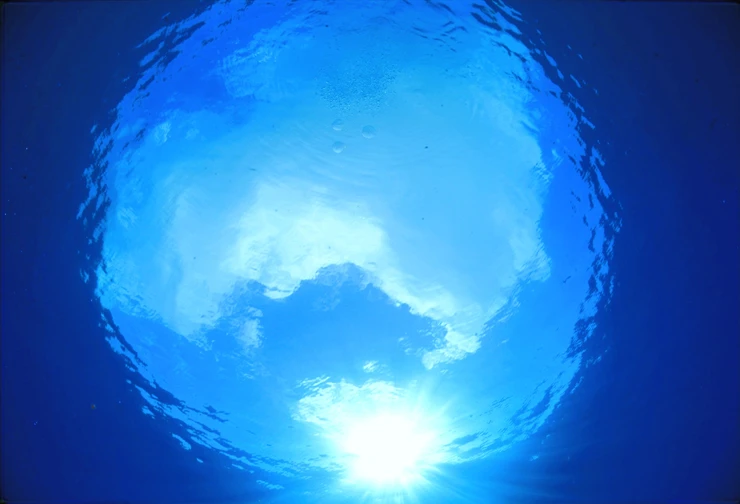
We have now made a philosophically-inclined descent towards the Center from the right side of the triangle (mythology as such did not continue past the Center), so we will make a more mythological descent from the left side. According to Ovid's Metamorphoses, the Ark of Prometheus' son, Deukalion, came to rest on Mount Parnassus in Greece after Zeus sent a great Deluge (Flood) to destroy mankind. Our imaginative thinking should already sense the inner meaning that the image of a great Flood conveys. We can also make the imaginative connection to the Flood myth in the book of Genesis, with its images of Noah's Ark. Flood myths of this sort are found in all ancient cultures of the world. They emerge from widely dispersed regions and share remarkably similar images. The Flood occurs when people are eating and drinking, buying and selling, planting and building, with little thought of spiritual matters - when the thoughts of man's heart are only evil continually.
"The God of Nature did his soul inspire,
Or Earth, but new divided from the sky,
And, pliant, still retain’d th’ aetherial energy:
Which wise Prometheus temper’d into paste,
And, mixt with living streams,the godlike image cast.
Thus, while the mute creation downward bend
Their sight, and to their earthly mother tend,
Man looks aloft; and with erected eyes
Beholds his own hereditary skies.
From such rude principles our form began;
And earth wasmetamorphos’d into Man.
...
Neglected altars must no longer smoke,
If none were left to worship, and invoke.
To whom the Father of the Gods reply’d,
Lay that unnecessary fear aside:
Mine be the care, new people to provide.
I will from wondrous principles ordain
A race unlike the first, and try my skill again.
...
His thoughts to some securer punishment:
Concludes to pour a watry deluge down;
And what he durst not burn, resolves to drown.
The northern breath, that freezes floods, he binds;
With all the race of cloud-dispelling winds:
The south he loos’d, who night and horror brings;
And foggs are shaken from his flaggy wings.
From his divided beard two streams he pours,
His head, and rheumy eyes distill in show’rs."
- Ovid, Metamorphoses
Or Earth, but new divided from the sky,
And, pliant, still retain’d th’ aetherial energy:
Which wise Prometheus temper’d into paste,
And, mixt with living streams,the godlike image cast.
Thus, while the mute creation downward bend
Their sight, and to their earthly mother tend,
Man looks aloft; and with erected eyes
Beholds his own hereditary skies.
From such rude principles our form began;
And earth wasmetamorphos’d into Man.
...
Neglected altars must no longer smoke,
If none were left to worship, and invoke.
To whom the Father of the Gods reply’d,
Lay that unnecessary fear aside:
Mine be the care, new people to provide.
I will from wondrous principles ordain
A race unlike the first, and try my skill again.
...
His thoughts to some securer punishment:
Concludes to pour a watry deluge down;
And what he durst not burn, resolves to drown.
The northern breath, that freezes floods, he binds;
With all the race of cloud-dispelling winds:
The south he loos’d, who night and horror brings;
And foggs are shaken from his flaggy wings.
From his divided beard two streams he pours,
His head, and rheumy eyes distill in show’rs."
- Ovid, Metamorphoses
The Flood conveys the meaning of a deep unconscious state which envelops mankind and brings forth hidden psychic monsters of all sort. All images of deep waters in ancient mythology more generally are linked to the matrix of the collective subconscious by which all existing life is consumed - all in whose nostrils was the breath of the spirit of life dies - and from which all new life is born. Humanity of the late 3rd epoch was losing direct consciousness of the spiritual realm, and the death of that image-consciousness gave birth to humanity's self-consciousness in the dawning 4th epoch. The human soul was forced to orient itself by way of its own relation to the sense-world, as it could no longer rely on the Gods or their memories to deliver them from the torrential and tortuous rains of the Deluge.
Instead, Noah was forced to send out a dove (spirit) so as to know that the waters had receded from the earth. Most people are familiar with the myth of Prometheus - the Greek Titan who stole Fire - the Light of consciousness - from the Gods and delivered it to mankind. Lesser known is that Prometheus had an inverted mythic image - his twin brother Epimetheus. The latter's name means "hindsight" or "after-thinker". Plato related that Epimetheus, prior to his brother's deliverance of humanity by way of Fire, was entrusted with the duty of assigning positive traits to the world's creatures. When he came to humanity, however, he had run out of traits to assign because he lacked foresight. Here we find a mirror-image mythic connection to the ancient account of the Flood.
The Biblical Adam, who, like Epimetheus, was also entrusted with naming God's creatures on Earth, and who was united in essence with his wife, Eve - she was formed from his "ribs" - ate from the tree of the knowledge of good and evil. When they disobeyed God's command, their eyes were opened and they knew that they were naked. Adam and Eve were then expelled from the Garden of Eden and we are introduced to their twins, Cain (older) and Abel (younger). Cain offered God sacrificial fruit of poor quality, while Abel offered God the best portions of the firstborn of his flock of sheep. Soft fruit is the food of newborns, who are still longing for the safety of their mother's womb (Epimetheus), while choice meat is an indication that one seeks to grow and become strong; to acquire real courage in foresight and forge ahead (Prometheus). To offer a sacrifice of the latter is to consciously manifest the future within the present - a concept even modern man is still familiar with
By those images, the ancient souls were recalling that foresight in the sense-world came at the greatest of spiritual costs for humanity. Prometheus was chained to a rock and his liver consumed by vultures. Yet one cannot imagine a future while always remembering the past; while making for oneself on Earth an idol in the likeness of that which is above in Heaven. This mythic imagery sensed how foresight would prove necessary for the soul's freedom - a freedom which is only born of inner knowledge. It is knowledge born from within and worked out for oneself in contemplative thought (as Aquinas began to do in the 13th century). Our modern understanding of "freedom" and "morality" has been greatly distorted through the filters of nominalism and rationalism, philosophical conceptions which elevated the abstract mechanical intellect and obscured the living Reason of Aquinas.
The ancient Greek and Hebrew ideals, although sensed dimly at the time, prefigured how the individual human soul would become central in all ethical and legal codes to follow. Once Noah, his family, and the animals departed the Ark, a new covenant was revealed - "whoever sheds the blood of man, by man his blood will be shed". Later, the Ten Commandments were revealed to Moses on Mount Sinai from within a "burning bush", which was not consumed by the flames. This revelation was a 'controlled demolition' of sorts - it brought about more quickly, orderly, and precisely the natural decay of spiritual remembrance which was occurring in the surrounding pagan cultures, such as that of ancient Egypt. The ancient Hebrew soul in the sense-world was rather violently thrown back on itself for its future knowledge of the Divine.
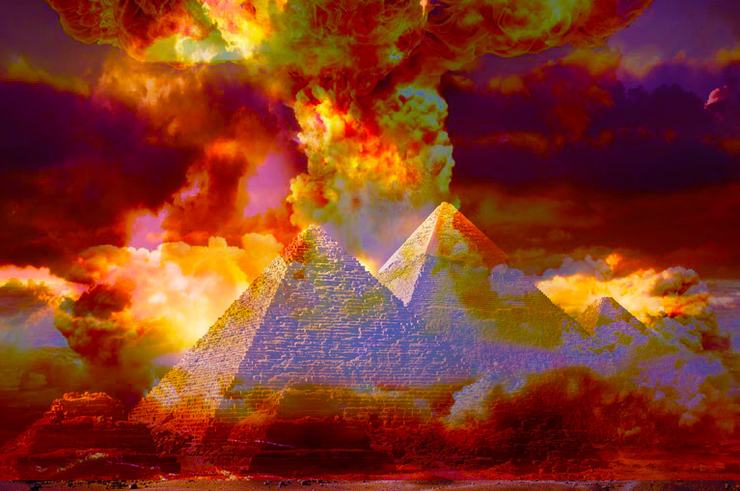
Due to the new 4th epoch impulse, "looking back" without foresight was not considered a positive trait for humans to possess or seek after. Plato related that in his account of Epimetheus' neglect when the latter ran out of traits to assign for humans. It is likewise related by the image of Lot's wife becoming a "pillar of salt" when she took one last glance back at Sodom and Gomorrah - the land of grotesquely sinful activity she had just escaped. When human souls of the 4th epoch - with their nascent Self-consciousness - "look back" to the prior epochs of ancient spiritual clairvoyance for orientation, they are inhibiting that infant Self from further natural development and knowledge within the sense-world. It is as if the infant desires to be shoved back into its mothers' womb, instead of proceeding to crawl, walk, speak, and think by way of somewhat unrestrained imitation and exploration.
We should sense this impulse crystallizing within 4th epoch soul as it began to discern a greater good which might come from its precipitous Fall. The infant Self could learn, by its own power, how to stand upright, speak, and think. From that natural transition to inner thought and the inner Memory made possible by it, all ancient mythology, philosophy, and theology of the 4th epoch was born. These souls began to dimly sense that the old identities of castes, clans, tribes, and races were losing their importance to the One family of God who all souls belonged to. It was by no means an easy path to tread in the 4th epoch - many trials and tribulations had to be endured by the wise prophets, sages, and philosophers - as souls of the 20th to 21st century have endured and will endure many more - before the peoples of the Earth can be refined and purified like silver and gold.
A seed was planted at the dawn of the 4th epoch: the human soul who looks to Nature, the Pharaohs, or even the Gods for their moral guidance must begin bringing those moral maxims down closer to Earth. The maxims must be embodied in the familial, civic, and religious institutions of the sense-world. Not only must those institutions be established, they must also be managed by human souls and become the central locus of daily activities in life. We find the most spectacular image of this monumental transformation after Moses is given the commandments and asks God what should be told to the children of Israel when they ask for His name - "I AM WHO I AM... thus you say to the children of Israel, 'I AM has sent me to you.'" God cannot even have a specified name anymore, as that would leave the Israelites with too personal of a connection with the Divine.
And so the human soul at the dawn of the 6th epoch receives a mirrored impulse: he who seeks his "morality" in external dictates, whether from kings, priests, the State, or "God", is fooling himself. That soul is forgetting all such dictates found their origin in the moral intuitions of individual men like the son of Prometheus, Deukalion and Noah; like Abraham and Moses; like David, Solomon, and the Hebrew prophets; like Socrates, Plato, and Aristotle (who we still have yet to imagine). These were men who attained to true Wisdom in thought - who sacrificed and burned incense at the high places. The divine commands and civic dictates found in Earthly institutions are but dim reflections of our own moral intuitions which we projected into the world during the 4th epoch. Genuine freedom will now come from each individual rebirthing those intuitions within her own soul, in the Light and Warmth of awakening consciousness, as it melts down her intellectual idols of silver and idols of gold.